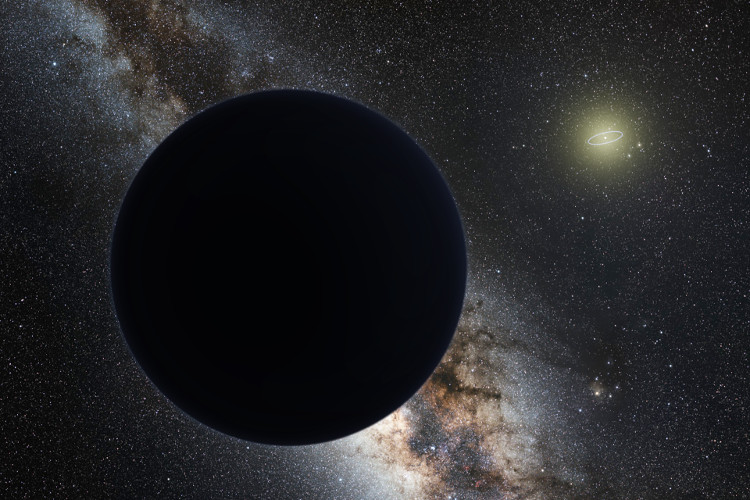The 9th planet can be found in 16 months
A group of astronomers believed to be able to identify the mysterious 9th planet at the outer edge of the solar system for about 16 months.
Astronomer Mike Brown of the California Institute of Technology, USA (Caltech) claims to be able to find traces of the ninth planet in 16 months or longer at a conference held Oct. 19 in Pasadena, California, follow Space. This is a joint meeting between the Planetary Science Board of the American Astronomical Society (DPS) and the European Planetary Science Council (EPSC).
According to Brown, about 8 to 10 research groups around the world are searching for the ninth planet. "I'm sure the following winter will be over in the winter, someone will find the ninth planet," Brown said . "At the next meeting between DPS and EPSC, we will discuss discovering the 9th planet instead of finding it."

The ninth planet at the outer edge of the solar system may be 10 times heavier than Earth.(Photo: Caltech).
The existence of the ninth planet was first mentioned in 2014 by two astronomers Scott Sheppard of the Carnegie Science Institute in Washington DC and Chadwick Trujillo at the Gemini Observatory in Hawaii.
Sheppard and Trujillo found the orbits of the Sedna dwarf planet , celestial bodies 2012 VP113 and some other celestial bodies farther away than Pluto with the same strange characteristics. Most likely their journey in space is influenced by a huge undiscovered object in the same area.
Researchers believe that this hypothetical planet is twice as large as the Earth 2-15 times and lies hundreds of astronomical units (AU) from the Sun. Astronomical unit is the distance between the Earth and the Sun, corresponding to about 150 million km.
The Sheppard group's theory was further reinforced when Brown and his colleagues at Caltech Konstantin Batygin found evidence of the hypothetical planet's impact on the orbit of another group of celestial bodies within the Kuiper belt. According to Brown and Batygin's calculations, "the 9th planet" may be 10 times heavier than Earth, orbiting an elliptical orbit with the farthest point of the Sun at around 1,000 AU.
- Found a way to spot the 9th planet in the Solar System?
- The 9th planet has ice-covered iron core
- Scientific research on the mission to discover Pluto
- New Mexico still considers Pluto a planet
- Discovering the planet is very similar to the earth
- Discovered that 9 'super-Earths' can support life
- Find the hottest planet ever
- Miraculously discovering the 'forbidden planet' in the Solar System
- For the first time, the planet has 4 suns
- The 9th planet of the solar system will be found in 2016
- Detecting water in a strange planet's atmosphere
- Scientists have found a way to help you regrow new teeth after only 2 months
 Van Allen's belt and evidence that the Apollo 11 mission to the Moon was myth
Van Allen's belt and evidence that the Apollo 11 mission to the Moon was myth The levels of civilization in the universe (Kardashev scale)
The levels of civilization in the universe (Kardashev scale) Today Mars, the sun and the Earth are aligned
Today Mars, the sun and the Earth are aligned The Amazon owner announced a secret plan to build a space base for thousands of people
The Amazon owner announced a secret plan to build a space base for thousands of people